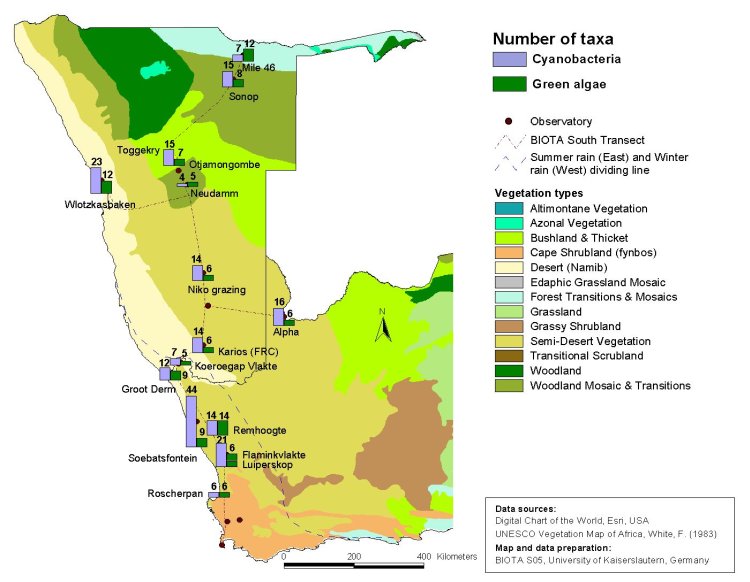Taxonomic diversity of cyanobacteria and green algae along the transect showed a high spatial variability (values between 1 and 44 taxa per observatory). 86 cyanobacterial species belonging to 23 genera and 38 green algae species belonging to 26 genera were determined morphologically. The most common genera of cyanobacteria found along the transect were Chroococcidiopsis, Microcoleus, Nostoc, Phormidium, Pseudanabaena, Pseudophormidium, Schizothrix, Scytonema and Tolypothrix. Genera from three green algal classes were found, i.e. Chlorophyceae (e.g. Botrydiopsis, Chlorococcum, Chlorosarcinopsis, Deasonia, Tetracystis), Trebouxiophyceae (Myrmecia, Trebouxia, Chlorella s.str., Stichococcus), Streptophyta/Klebsormidiophyceae (Klebsormidium) and several unidentified lineages that may represent new species and genera. A bi-phasic approach of organism identification (morphology and sequence data) established during phase II allows a better performance of adequate species determination of cyanobacteria and green algae.Common lichen genera of Biological Soil Crusts (BSC) are Catapyrenium, Collema, Diploschistes, Endocarpon, Heppia, Peltula and Psora and common bryophyte genera are Riccia, Crossidium and Desmatodon. Characteristic crust compositions have been found to be associated with different habitats and bioms: e.g. BSCs populating the hypolithon are dominated by cyanobacteria, whereas soils of the Namib Desert are predominantly colonized by lichens. |






 Go to the WeatherNet
Go to the WeatherNet

